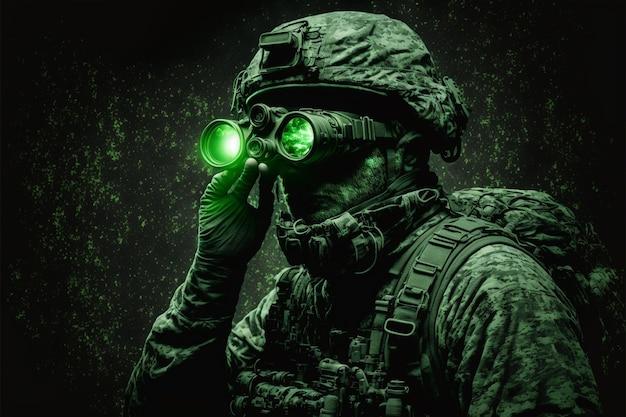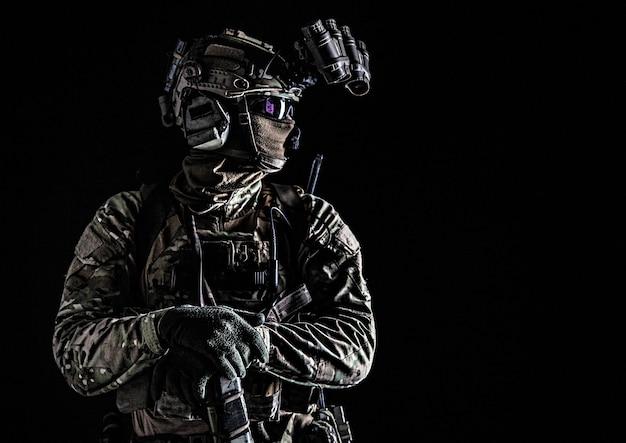Night vision technology has long been associated with spy movies and military operations, but how much do we really know about its capabilities? Can it actually work in total darkness, as the name suggests? In this blog post, we will delve into the fascinating world of night vision and shed some light on the questions surrounding its functionality.
One common misconception is that night vision devices can see in pitch-black darkness without any source of light. However, the reality is a bit more nuanced. While some night vision devices claim to work in total darkness, this is not entirely accurate. Most night vision technologies rely on ambient light, such as moonlight or starlight, to amplify the available photons and create a visible image.
In this blog post, we will explore the science behind night vision, discuss the various generations of night vision technology, and address frequently asked questions like whether night vision can see through walls or how far it can see. So buckle up as we embark on an enlightening journey through the realm of night vision in 2023.

Does Night Vision Work in Total Darkness?
If you’ve ever found yourself stumbling around in the pitch-black darkness, desperately trying to find your way, then you’ve probably wondered if night vision goggles are the answer to your prayers. After all, who wouldn’t want to see in the dark like a superhero? But the burning question remains: does night vision actually work in total darkness? Let’s shed some light on this topic, dear reader!
The Science Behind Night Vision
To understand whether night vision works in total darkness, it’s important to grasp the science behind it. Night vision technology utilizes special optics that amplify the available light, allowing our eyes to perceive images in low-light conditions. The most common types of night vision devices are image intensifiers and thermal imaging cameras.
Image Intensifiers: Seeing in the Shadows
Image intensifiers work by collecting tiny amounts of light, such as moonlight or starlight, and then boosting their intensity. These devices use a process called “photocathode reaction” to convert photons into electrons. These electrons are then accelerated and hit a phosphor screen, which emits a greenish image that we can perceive.
While image intensifiers can dramatically enhance our ability to see in dark environments, they have their limits. In total darkness, without any available light to amplify, image intensifiers won’t be of much help. They rely on at least some ambient light, no matter how faint, to create a visible image.
Thermal Imaging: Seeing Heat, Not Light
Now, let’s turn up the heat and discuss thermal imaging. Unlike image intensifiers that rely on light, thermal imaging works by detecting the heat emitted by objects. Every living being emits heat, even in complete darkness, thanks to the wonders of thermodynamics!
Thermal imaging cameras can detect these temperature differences and represent them as colorful images. The hotter an object, the brighter it appears on the thermal image. So, even in total darkness where no light is available, thermal imaging can still provide us with valuable visibility based on heat signatures.
Is Total Darkness Really Total
Although darkness, by definition, implies the absence of light, we seldom encounter situations of absolute darkness in the real world. Even in seemingly lightless environments, such as deep caves or remote wilderness, there are usually faint traces of ambient light. Whether it’s a distant star, a crack in the cave wall, or simply our own body heat, there’s almost always a glimmer of illumination, no matter how faint.
So, while night vision may struggle in environments with extremely minimal light, it’s generally rare to encounter total darkness. Therefore, night vision goggles can still be valuable tools for enhancing our vision, even in the darkest corners of the world.
Final Verdict: Night Vision needs a Glimmer of Hope!
In conclusion, dear reader, night vision does indeed require at least some source of light, no matter how feeble. Image intensifiers rely on external light to amplify and create visible images, while thermal imaging detects heat emitted by objects. So, while night vision goggles won’t transform you into a creature of the night, they can still be incredibly useful in low-light conditions. Just remember, even in the darkest moments, there’s often a faint glimmer of hope, or in this case, a sliver of ambient light to guide our way.
So go forth, my friend, and embrace the night with your trusty night vision goggles, knowing that even when the darkness seems overpowering, a little bit of light can make all the difference!

FAQ: Does night vision work in total darkness?
Do all night vision cameras emit light
No, not all night vision cameras emit light. In fact, most modern night vision devices use technology that doesn’t require any additional light sources. We’re not talking about disco parties here; these cameras let you see in the dark without attracting unwanted attention.
What is the latest version of night vision technology
The latest and greatest night vision technology on the market is Gen 4. It offers impressive image quality and clarity, allowing you to see details even in the darkest of nights. With Gen 4, you’ll feel like you have supernatural powers (minus the cape, of course).
Can night vision see through walls
Night vision may make you feel like a superhero, but it doesn’t grant x-ray vision. Unfortunately, it can’t see through walls. Night vision devices work by amplifying available light, so unless you have a magic wand or a teleportation device, walls will remain just as opaque as ever.
Does night vision actually work in total darkness
Yes, night vision can work in total darkness. Its superpower lies in its ability to detect and amplify even the tiniest amount of existing light, such as moonlight or distant street lamps. So, even on the darkest of nights, you can channel your inner cat and see what’s happening around you.
What’s the difference between night vision and FLIR
Ah, the age-old battle of night vision versus FLIR (Forward Looking Infrared). While both technologies help us navigate the dark, there are some key differences. Night vision enhances existing light, while FLIR detects and visualizes heat signatures. So, if you’re in for some thermal fun, FLIR is the way to go!
What are some night vision no-no’s
While night vision might make you feel like a secret agent, there are a few things you should avoid doing. First, don’t try to clean the lenses with your superhero cape; use a soft cloth instead. Second, resist the urge to become a nocturnal ninja and startle unsuspecting neighbors – stealth has its time and place!
Are Night Vision Goggles legal to own
Yes, you can legally own Night Vision Goggles! Just remember, with great power comes great responsibility. Make sure to use them within the bounds of the law and respect the privacy of others. And no, they won’t grant you the ability to fly or make toast in record time.
How far can night vision see
Night vision’s vision isn’t limited to just a few feet. Depending on the device’s quality and conditions, you can typically see anywhere from 50 to 200 yards. So, whether you’re keeping an eye on the neighborhood squirrels or embarking on a covert mission, night vision has got your back.
What is the best budget-friendly night vision scope
Looking to step into the world of night vision without burning a hole in your pocket? The best budget-friendly night vision scope will vary depending on your specific needs and preferences. However, some popular options include the ATN X-Sight 4K Pro and the Sightmark Photon RT. Remember, even superheroes appreciate a good bargain!
Is Night Vision legal everywhere
While Night Vision is legal to own in most places, it’s always wise to check your local regulations. Laws regarding its use in public or certain situations may vary, so be sure to stay on the right side of justice. After all, it’s better to be a legal hero than a nocturnal outlaw.
Why does night vision come with a hefty price tag
Ah, the eternal question of why good things often come with a hefty price tag. Night vision devices are expensive because they’re packed with cutting-edge technology, precision engineering, and high-quality components. Plus, manufacturers need to recoup those costs from all the aspiring superheroes out there. Sorry, it’s just the law of the night vision market!
Can police helicopters see through houses
Well, while police helicopters are undoubtedly impressive machines, they can’t see through houses like Superman with x-ray vision. While they may use various advanced surveillance technologies, including thermal imaging, walls are still walls to them. So, if you need some privacy, your home is still the place to go!
And there you have it, the most frequently asked questions about night vision. Remember, night vision is all about embracing the darkness and shedding light on the unseen. Happy night exploring, fellow nocturnal adventurers!
